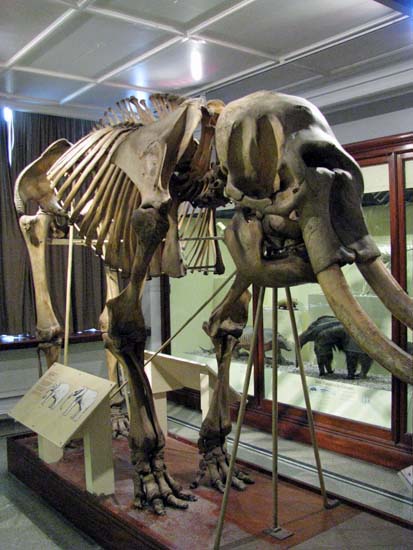 Shown with the permission of Chethams Library - Belle Vue Archive In a time when menageries of exotic animals were a common sight on the highways and byways of Britain, the names of some of the animals and their keepers were well known to the public. Lorenzo, the Lion Tamer, Lawrence was one such person. In his role as lion keeper he often performed his version of "Androcles and the Lion" using lions from Wombwell's famous travelling menagerie, in particular lions known as Wallace and Boss. Lorenzo Lawrence though gained most of his notoriety through his relationship with the elephant Maharajah. On April 9, 1872, an unusual auction took place in the Waverley Market in Edinburgh. The auctioneer at this sale was knocking down lions, tigers, elephants and numerous other exotic animals in disposing of the assets of Wombwell's Royal Number One Menagerie. In the audience at the sale was James Jennison, one of the owners of the Belle Vue Zoological Gardens in Manchester. When the auction was over James had spent £797:10:0 and was the owner of a baboon, a nylghau (an Asian antelope), a lioness and a seven-year old Asian elephant called Maharajah. James' purchases were booked onto the 10:05 express train out of Waverley Station two days later. Lorenzo accompanied Maharajah to the station and was scheduled to travel with him. Maharajah was loaded into the horse box and the doors closed. Moments later the front of the wagon was shattered and Maharajah's head was sticking out of the hole he created. The smashed wagon, and the noise emanating from Maharajah, were causing consternation in the station but things got worse when the elephant decided to back-up and destroyed the other end of his wagon. The situation was diffused when Lorenzo stepped in and unloaded Maharajah, returning the elephant to the platform where he once again resumed his mild-mannered and friendly demeanor. Lorenzo also solved the transportation problem by announcing that he would, "Jolly well walk Maharajah to Manchester." In his book, "The Elephant Who Walked to Manchester," David Barnaby speculates on just how spontaneous this event was. He points out the fact that Maharajah was quite familiar with wagons and had a reputation for docile and cooperative behaviour. With the closure and dispersal of the menagerie, Lorenzo was essentially out of a job once Maharajah was delivered that day, but as a result of what happened, he immediately extended his employment. Finally, Lorenzo was an accomplished animal trainer skilled in getting animals to perform without the audience detecting any visible signs of control. Barnaby is quick to point out that Lorenzo's actions on Waverley Station could have been those of a skilled animal handler averting a disaster. However, they could also have been an accomplished performance which added immeasurably to Lorenzo's fame and employment prospects. Lorenzo and Maharajah set out for Manchester that same day. They covered 20 miles on the first day and kept up that pace for the following 8 days arriving in Bolton, north of Manchester. From there they paced themselves so that they would arrive at the 2 p.m. Saturday, April 20 date advertised in the Manchester Guardian. The Jennisons were never backwards when it came to recognizing a good opportunity to gather in a crowd. In all, the trip from Edinburgh had taken 10 days. Along the route, legend has it, the travelers ran into a difficult toll gate operator who insisted on haggling over the toll for an elephant. Losing patience, so the story goes, Maharajah lifted up the gate and went on his way. The incident inspired at least two paintings and has been documented in a number of books. Barnaby's investigations though, backed up by a report in the Manchester Guardian three weeks after the walk, would suggest that the incident never happened. It is possible that an elephant did capture people's imagination by walking off with a much despised toll gate but it wasn't Maharajah.  Lorenzo and Maharajah continued a close relationship for 10 more years while the elephant lived and worked at Belle Vue. In all though, Lorenzo worked for 40 years with a series of elephants. When Maharajah arrived at the zoo Sally, another Asiatic elephant, was already in residence, having arrived three years earlier. After Maharajah's death from pneumonia other elephants took his place and continued the tradition of giving rides to young visitors to the zoo. Lorenzo's work at Belle
Vue came to an end in 1912. An unfortunate accident on
the busy Whit Weekend resulted in a momentary panic in
one of two elephants working that day. In the ensuing
rush of pachyderm bodies, Lorenzo broke a leg. The
injury brought to an end the career of Lorenzo, the Lion
Tamer, Lawrence. Maharajah's skeleton can
been see today as an exhibit at the Manchester Museum.  For the account of Lorenzo Lawrence life I relied heavily on "The Elephant Who Walked to Manchester" by David Barnaby, published by Basset Publications, North Hill, Plymouth, S. Devon, ISBN 0946873 96 8. The book is both informative and entertaining and well worth reading. All the material on this web site is © David Boardman, unless otherwise stated, and may not be copied, downloaded or otherwise reproduced or retransmitted without the written permission of the webmaster. Any contravention of the copyright of others is unintentional and will be corrected immediately when brought to the attention of the webmaster. |